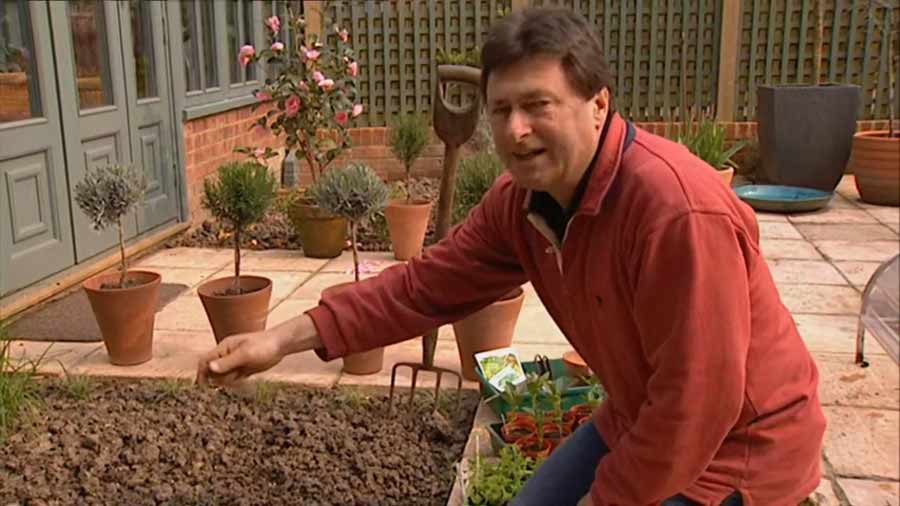Gardeners World episode 7 2002: April is here and Alan Titchmarsh is back in the garden sowing lettuce and Chris Bradshaw is in the dump garden planting marsh marigold.
Gardening show packed with good ideas, tips, advice from experts and timely reminders to get the most out of your garden, whatever its size or type.
Gardeners World episode 7 2002
How to grow lettuce
Choose the right varieties and you can have lettuce almost all year round. There are so many types of lettuce to choose from – all with different colours, flavours and textures – that salad need never be boring! There are two main types of lettuce – hearting lettuces have a dense centre, while loose-leaf lettuces have open leaves and no heart. You can also grow a variety of salad leaves that can be picked while young and tender.
Grow lettuces in full sun on moisture-retentive soil. Early and late sowings may need protection against cold, using cloches, plastic tunnels or horticultural fleece. All these types of protection will be available at garden centres.
Thin seedlings as soon as the first true leaves appear and continue until the plants are 30cm (12in) apart. The seedlings you thin out can be washed and eaten too. Water when the soil is dry; the best time to water is in the early morning. Early in the year sparrows can be a problem as they find young lettuce plants irresistible. Protect with fleece, chicken wire or similar.
Caltha palustris
Caltha palustris, known as marsh-marigold and kingcup, is a small to medium size perennial herbaceous plant of the buttercup family, native to marshes, fens, ditches and wet woodland in temperate regions of the Northern Hemisphere. It flowers between April and August, dependent on altitude and latitude, but occasional flowers may occur at other times.
Caltha palustris is a 10–80 cm high, hairless, fleshy, perennial, herbaceous plant, that dies down in autumn and overwinters with buds near the surface of the marshy soil. The plants have many, 2–3 mm thick strongly branching roots. Its flowering stems are hollow, erect or more or less decumbent. The alternate true leaves are in a rosette, each of which consist of a leaf stem that is about 4× as long as the kidney-shaped leaf blade, itself between 3–25 cm long and 3–20 cm wide, with a heart-shaped foot, a blunt tip, and a scalloped to toothed, sometime almost entire margin particularly towards the tip. In their youth the leaves are protected by a membranous sheath, that may be up to 3 cm long in fully grown plants.
